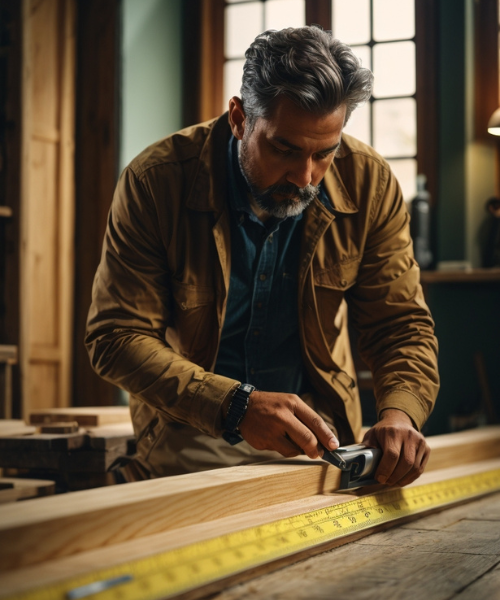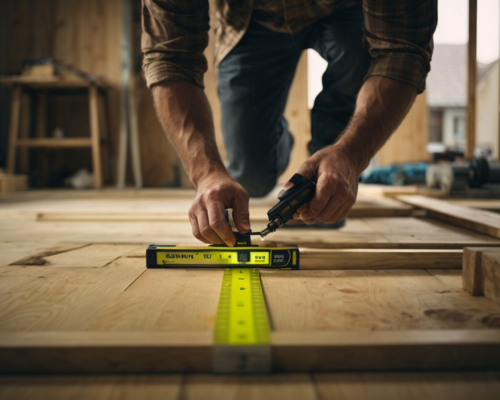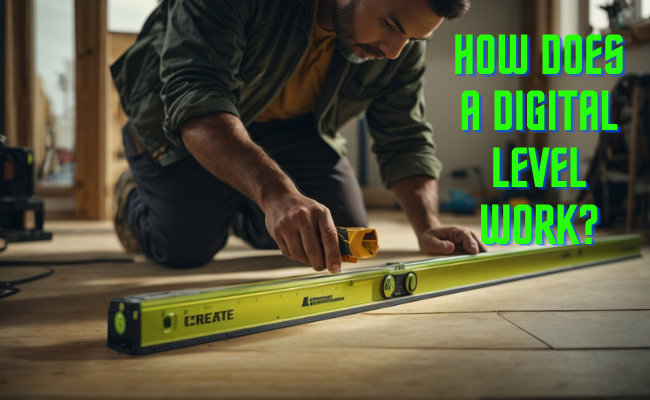I’ve seen the construction and home renovation industries evolve in many ways over the past 30 years. One notable change is the rise of digital levels and the phasing out of old-fashioned spirit levels. The question that often comes up is: How does a digital level work?
In this article, I’ll explain what’s inside these high-tech levels, how they work, and why they can boost productivity on the job site. I’ll also share some tips from my experience on how to use them effectively based on the many projects I’ve overseen.
Contents
So, How Do Digital Levels Work? What Technology Is Used?
Traditional spirit levels have been around since the 17th century and use a glass vial with a slight curve, filled with ethanol or ether. As you tilt the level, bubbles in the vial float towards the center if the surface is flat. It’s a simple and inexpensive tool, but not incredibly precise.
Digital levels take all that crude bubble-watching out of the equation. Instead of eyeballing a bubble, they use tilt sensors and microprocessors to calculate precise measurements. I first started seeing these high-tech levels when I was overseeing commercial building projects in the early 2000s. At first, I was skeptical, but it didn’t take long for me to become a believer.
The first time I used one was on a large warehouse project where we had to ensure the concrete slab foundation was perfectly level. As we measured across the massive slab with a digital level, it gave us exact measurements down to 0.1 degree.
We immediately saw that one section was 0.3 degrees off. We adjusted and re-measured with the digital level until it was perfect. Trying to achieve that level of precision with a basic bubble level would have been difficult if not impossible!

Inside the Digital Level
So how do these futuristic-looking digital levels actually work? What are the key components inside giving such precise measurements?
Tilt Sensors
The key technology in digital levels is the tilt sensor. This sensor detects even the slightest change in orientation relative to gravity. There are a few different types:
- Pendulum sensors use a pendulum suspended in liquid. As the sensor tilts, the pendulum swings, detecting the change.
- MEMS accelerometers contain a tiny microchip with an accelerometer that can detect movement and tilt in 3 axes.
- Electrolytic tilt sensors use a glass tube filled with electrolytic fluid. Tilting causes the fluid to flow to the sides, changing electrical resistance.
I prefer levels with MEMS accelerometers since they offer the highest precision. However, all three tilt sensor types are major upgrades over eyeballing bubbles!
Microprocessor
The data from the tilt sensor is sent to the level’s microprocessor. This chip takes the raw sensor data and converts it into precise digital angle measurements. The processor is programmed to filter out minor vibrations or movements that could impact the reading.
Display
The key angle and leveling data is clearly displayed on the digital level’s screen, with a few variations:
- A measurement in degrees or percent slope. E.g. 1.5° or 2.7% slope.
- Level indicators that indicate if the surface is level, or show how far off.
- A graphical bubble display that electronically simulates a classic bubble level.
Higher end models even allow calibration and zero resetting if needed. This digital brain takes all the guesswork out of reading angles and levels.

Advanced Features and Models
While the sensors, processor, and display are the foundation of all digital levels, some advanced professional models include extra capabilities:
- Temperature compensation – automatically accounts for thermal expansion or contraction of materials that can impact measurements.
- Vibration resistance – ignores vibrations, oscillations, and small movements that could impact the reading.
- Memory – saves measurements for record keeping and verification.
- Averaging – takes multiple readings and averages for increased consistency.
- Connectivity – Bluetooth allows remote monitoring and data logging. Wifi enables software integration.
The model I currently use on job sites is the Bosch GOL32C, which has all these key features. It provides an impressive 0.1 degree accuracy and connects wirelessly to my tablet for seamless data capture.
Using a Digital Level on the Job Site
While digital levels are highly precise tools, they still require an experienced operator. Here are my tips for properly using them on the job site:
- Always turn on the level and verify the battery level first – nothing worse than it dying mid-use! I’ve learned to charge religiously.
- Place the level gently and avoid vibrations – quick motions can impact the accelerometer. Let it settle before taking measurements.
- If measuring over distance, use a tripod or leveling bar to evenly distribute across two points. Don’t move the level between measuring points.
- On reflective or uneven surfaces, use a damp piece of paper to provide a clean, flat base. The sensors can’t read through gaps or debris.
- Take multiple measurements at each spot and listen for an audible averaging tone on professional models. This ensures accuracy.
- For delicate projects, only work in suitable temperatures – rapid temperature swings can interfere even with temperature compensation.
Following this good practice helps reduce user error and environmental factors. Digital levels perform best when paired with know-how!
Troubleshooting Issues
While digital levels are very durable, issues can occasionally come up:
Inaccurate measurements – First, ensure your measuring technique is sound. Then check for debris interfering with the base. Finally, recalibrate per the device instructions. Call the manufacturer if needed.
No power – Check battery charge and polarity. For AAs or AAAs, replacing batteries often solves it. If using a specialty battery, contact the manufacturer for a replacement.
Physical damage – Dropping or banging can knock the sensitive internal sensors out of alignment. You’ll need professional repair or replacement if severe. Protect your investment!
Won’t interface with software – Ensure you have the latest firmware and app updates. Delete and re-pair connections if Bluetooth or WiFi issues arise.
With good care and maintenance, a quality digital level should provide many years of reliable service. But glitches do happen with any electronic device. Handle with care and use common sense troubleshooting to get back up and running ASAP.

Why I Swear By Digital Levels
While it may seem like just a hyped-up bubble level, I can’t overstate how much digital levels have improved my job sites. Here’s why I swear by them:
- Faster leveling and layout – immediate precise readouts mean less double checking. We save hours.
- Eliminates second-guessing – everyone trusts the objective digital readout. No more debates!
- Caught issues early – subtle slopes were detected early before becoming big fixes.
- Enabled advanced techniques – tilts, slopes, even complex angles are easier than ever.
- Improved quality – precision levelling means professional grade finished products.
On large commercial projects, digital levels are mandatory for us now. But I also recommend them to home DIYers for fencing, tiling, finishing – anything requiring precise levelling. They’ll see a huge difference versus the bubble levels of old.
The bottom line: I can’t imagine going back to the days of squinting at bubbles now that I’ve experienced the precision of digital levels! This is one tool that has definitely improved with the times. As technologies like MEMS accelerometers and mobile connectivity advance, the capabilities will only increase. Digital is the levelling future.
If you ask yourself the question “How does a digital level work?”, you are probably interested in using this measuring tool. Knowing exactly how a tool works will give you more of an idea of what results to expect.
Frequently Asked Questions
What are the benefits of a digital level compared to a spirit level?
Digital levels provide greater precision, consistency, advanced features, and objective numerical readings. Unlike eyeballing a bubble, you get an exact angle or slope measurement. They save time, reduce errors, and make levelling easier.
How accurate are digital levels?
Accuracy varies by model, but most provide at least 0.1 degree precision. Advanced professional models boast an incredible 0.02 degree accuracy. This far surpasses the human eye. Temperature compensation also improves accuracy under changing conditions.
Can I use a digital level on any surface or material?
Digital levels work on almost any surface, but very uneven or porous surfaces may need a shim to fill gaps. Use on concrete, wood, metal, masonry, and more. The tilt sensors detect orientation relative to gravity, not the surface itself.
How do I calibrate or check calibration on a digital level?
Most models include a simple calibration process in the device menu. This involves rotating and positioning the level flat, upside down, and on its side to reset the internal accelerometer. Check the user manual for full calibration instructions.
What are some troubleshooting tips for digital levels?
- Check battery charge and polarity
- Look for debris interfering with the base
- Recalibrate if needed
- Ensure proper handling/placement technique
- Update firmware and app software
- Check for physical damage
- Delete and re-pair wireless connections



